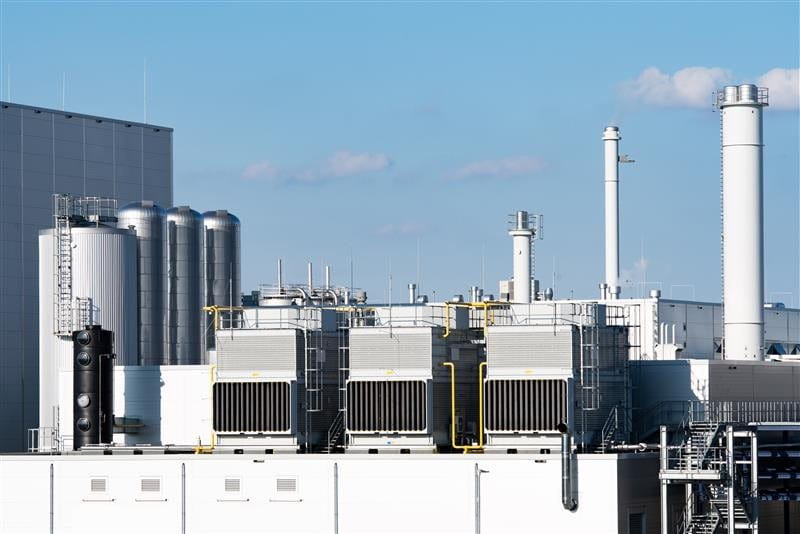These topics await you
Market and trends
Let’s start by talking about the markets and trends. A lot has happened in the last one to two years. The Russia/Ukraine conflict, the conflict in the Middle East, a rise in interest rates, and the formation of new governments in key infrastructure markets, most notably in the United States. So, what does all this mean for infrastructure?
Ravi Parekh: Despite some of the volatility and uncertainty, we’re continuing to see a growing need for private investment in public infrastructure, as government finances remain under pressure.
At the same time, the support for energy transition continues across key infrastructure markets, providing opportunities in areas like smart metering, electrification of transportation, battery storage, and renewable power generation. The demand is further supported by the environmental ambitions of certain governments, the push for energy independence from foreign countries, and the unprecedented power needs of digital infrastructure and electric transportation.
Furthermore, we expect increased investment in digital infrastructure, driven by the world’s increasing need for connectivity.
Given GCM Grosvenor’s global presence and your interaction with investors across the world, what are you hearing from your client base?
Ravi Parekh: We are fortunate to work with some of the world’s largest and most sophisticated institutional investors. While each investor has unique priorities, we’ve generally observed some regional trends: Asian investors are focused on yield from local assets given severe currency depreciation, European investors continue to focus on energy transition and fossil fuel avoidance, and North American investors generally tend to focus on higher returns driven by higher equity benchmarks.
While priorities vary by region and investor type, we believe that the need for infrastructure investment has never been greater - driven by globalization, urbanization, and digitalization. We are excited to help our investors capitalize on these opportunities.
Christian Jost, you are based in Switzerland. What are you hearing from Swiss investors?
Christian Jost: The demand for infrastructure assets has continuously increased over the years. Although the growth rate has slightly slowed in the past two years due to the denominator effect and rising interest rates, the asset class has gained momentum again with the recent interest rate declines. Therefore, infrastructure assets once again offer attractive return potential, for example, compared to bonds.
Furthermore, considering that revenues are often secured with longer-term and possibly inflation-linked contracts, they can potentially provide uncorrelated returns, attractive cash flows, some inflation protection, and overall stability for a multi-asset-portfolio.
You’ve mentioned stability, but how effective is it in practice?
Christian Jost: Private market assets are infrequently valued. This helps investors to maintain low volatility in their asset portfolios and provides for example pension funds with a better stability of their coverage ratios. However, it is important to exercise caution and not to confuse low volatility with low risk. Rather, one should closely examine a normalized long-term volatility and thus the actual underlying stability and resilience of the assets. Infrastructure assets generally offer the potential for high stability but must be properly structured to do so. We now have about 12 years of experience with infrastructure assets and have not only experienced fair-weather markets. As an analyst, the challenging periods are particularly interesting, such as in the years 2020 (Covid-19) and 2022 (interest rate hikes, inflation). We have seen that our portfolios provided a high level of stability and met our expectations.
Risks and diversification
What do you consider to be the biggest risk in infrastructure investments?
Ravi Parekh: Infrastructure investments are appealing because they provide essential services and often come with regulated and contracted returns, offering investors relatively stable cash flows. However, they’re not without risk – government policy changes can introduce regulatory uncertainty, and poorly structured deals can quickly lead to suboptimal returns, as Christian mentioned.
Even so-called core deals aren’t immune to risks, since they often come with elevated leverage levels. And if operating and financing costs aren’t aligned with revenues, whether due to inflation linkage or unhedged debt, the results can be far from ideal.
While asset managers can manage structuring risks, political risks are more difficult to anticipate. That’s why, as with any investment strategy, diversification is key.
What do you mean by diversification, how can this be achieved in infrastructure, and at what level?
Ravi Parekh: At GCM Grosvenor, we believe the key to consistent outperformance is smart diversification – across geographies, sectors, risk profiles, and even vintage years. Infrastructure is a broad asset class with a wide range of business models and risk/return profiles, so spreading investments strategically is essential.
Diversification isn’t just about what you invest in – it also comes down to deal sizes and avoiding overly concentrated portfolios. Plus, working with a mix of managers and teams can further enhance resilience and long-term success.
Easily said, but many primary fund managers have concentrated portfolios and fund-of-funds are expensive. Christian Jost, how do you tackle this challenge as an investor?
Christian Jost: Correct, this was the challenge which we observed before we started to invest in infrastructure. We already had regular private equity investments, which have a slightly higher risk/return profile. With the infrastructure investment we wanted to get more stability, and diversification is one of the key factors to achieve this. The return targets of net 8-10 percent in USD are also below regular private equity target returns. Therefore, cost efficiency is also of elevated importance.
We have decided to follow a co-investment approach (see text box), which allows for a flexible and optimized portfolio construction where a solid manager diversification can be achieved as well. Furthermore, since many co-investments don’t have management fee or carry, it often does not have the two fee layers as fund-of-funds would have.
Co-investments
What are the main advantages and disadvantages of co-investments?
Ravi Parekh: We believe co-investments offer a “privileged” access point to infrastructure assets. The privileged access comes from several key advantages: (i) exposure to top-tier managers in the infrastructure industry, (ii) an aerial view of the market to compare risk/return profiles across subsectors and geographies, (iii) multiple levels of underwriting, and (iv) minimal to no economics paid to the underlying sponsors.
A key challenge with co-investments is the need to build a strong team of skilled underwriters with broad market coverage to effectively access these opportunities. Additionally, since co-investments usually involve minority ownership, ensuring strong alignment with the lead manager is crucial to securing favorable terms and a well-structured deal.
Manager selection
At Zurich Invest you apply a best-in-class approach to find the best external asset manager for the appropriate vehicles. What should you look out for when choosing a manager?
Christian Jost: A solid deal-flow is key for a co-investment approach. The asset manager should have good access to the most attractive deals, and he should have a reasonable size to get into the deals at cheap or no costs. You should also analyze whether the type of deals in the deal-flow really fits your own DNA. Furthermore, you should check the asset allocation policy and whether you really get a pro-rata share of all co-investments in the pipeline, if you are only a co-investor. This is not always the case. Last but not least, a broadly diversified and experienced team is of high importance as well, in order to really analyze all deals independently and only cherry-pick the best opportunities.
What else should an investor look out for before investing into infrastructure?
Christian Jost: In addition to the mentioned diversification and costs, good governance, monitoring and control are very important for pension funds. Furthermore, the structure of the vehicle should be well evaluated, especially regarding tax efficiency and security. Additionally, every pension fund should consider whether a closed-end or open-end solution is more optimal for their own pension scheme. Both options have their advantages and disadvantages (refer to the article (in German)).


